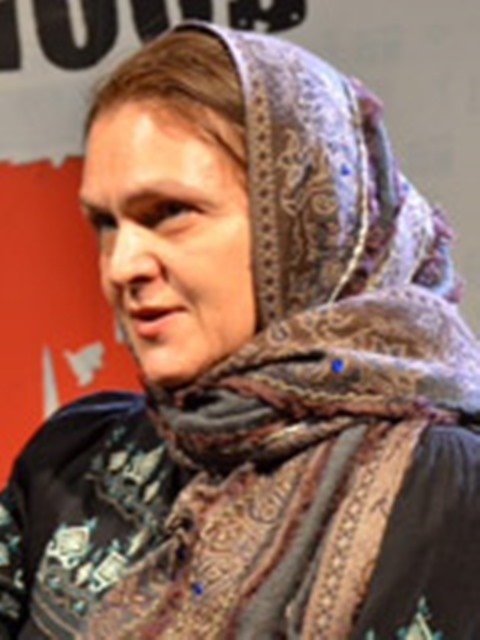The Shia street waiting: Syrian rebels' attacks on Shiites drag Lebanon into conflict
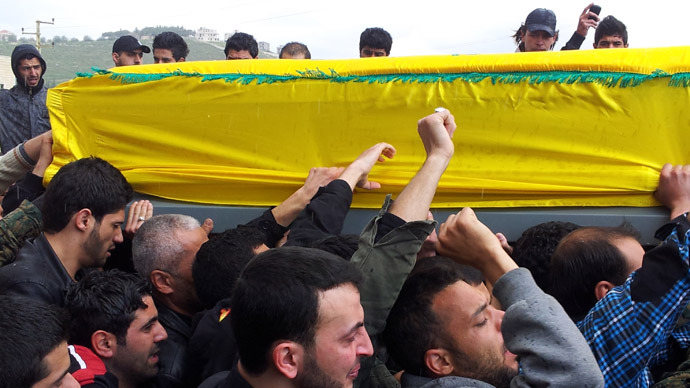
In order to engage Lebanese Hezbollah, the most powerful military group of the Islamic world, in the civil war Syrian rebels attack Shia sacred places and target 30, 000 Syrian Shia Muslims who live on the border with Lebanon.
Hezbollah is doing everything to delay its involvement.
Hezbollah is proud of the fact that it was not involved in the
Lebanese Civil War in 1970-1990s and was able to bring all Lebanese
parties and communities together. Hezbollah has always supported
the Palestinians, had been liked by the people in Lebanon and
Muslims in other countries. For 17 years, Hamas headquarters have
been located in Daheih, Hezbollah controlled suburb of Beirut. This
was a model for political and military cooperation between Shias
and Sunnis. It’s all gone now – there is no united front, no
solidarity, no joint resistance, which, according to Hezbollah, the
party fought and suffered for, paying with the lives of its
courageous soldiers. Now instead of this solidarity, Syrian rebels
declared war on the Shias.
Political nuisance
Last week, there were two outrageous incidents in Lebanon. These events were supposed to prove that people in Lebanon don’t support Hezbollah. Some activists caught a Syrian refugee in Tripoli, put a sign over his neck, saying “I am Alawite Shabiha” and paraded him around town. (Shabiha is a colloquial term, it means “mobster”, the rebels use this word for the Syrian neighborhood watch units).
Salem al-Rafie, a 43-year-old school teacher in Sidon, issued an edict calling for a "general mobilization among Sunnis to protect Sunni brothers." Few people responded to his call for a holy war on Shias, but they made this into a public act by forming a line in front of al-Rafie’s office, waiting to sign up for the jihad against Shias. This didn’t go any further, but the sheikh said it’s only a matter of time before this jihad against Shias begins.
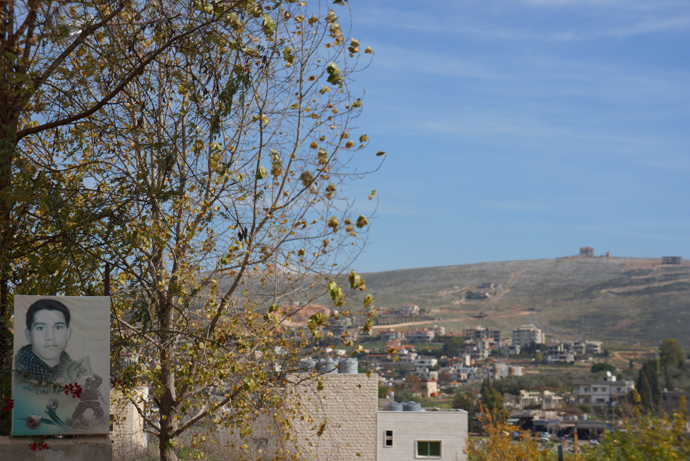
The leader of Hezbollah Hassan Nasrallah called a “political nuisance” the fact that the Syrian opposition and the Arab Spring are being distracted from the obvious enemy of all Muslims – Israel and its supporters – and dragged into the internal strife of Sunnis against Shias, Hezbollah, Iran, etc. He says that the rage of Muslims has been subtly redirected.
This “nuisance” often expresses itself in the killing of Shias. And the media that support the rebels report that they killed 10, 20, or even 40 members of the Resistance movement. Hezbollah does not comment on these reports. But people are waiting for a political reaction.
For many decades, Shias were the only Muslims who had a non-governmental military organization and a training base in Southern Lebanon and in Syria. It was Hezbollah, not the regimes in Arab countries that supported the Palestinians for many years. And now they are told that they are the enemy of Islam, as opposed to its heroic vanguard.
A martyr’s funeral
There are eleven martyrs in the Hojali family. Ten of them died fighting against Israel, and 24-year old Haidar Ahmad Hojali was shot by a Syrian rebel. His funeral in Nabatieh, southern Lebanon, turned into a major event – for many hours tens of thousands of people marched in the procession. The Shia street is waiting for Hezbollah to decide how it will respond to the killing of Shias and their exile from Syria.
In this community a family of a thousand is not considered all that large. The parents’ house is up on a hill, surrounded by fields. At noon, many people gather by the gate. The house itself is packed with close relatives. The martyr’s mother, aunts, grandmothers, and sisters are sitting in the room. Almost all of them have children in their lap. All the women are wearing black. Most of them look numb. If somebody begins to cry, the numbness goes away for a little bit, but later comes back. You have to understand how Shias view death and martyrs – it is the greatest reward you can get.
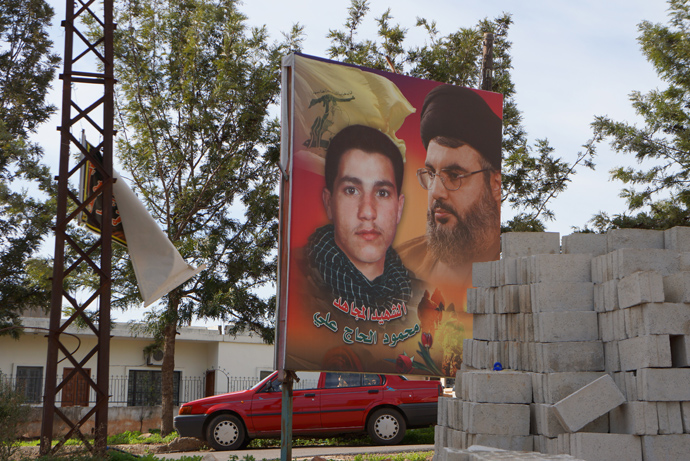
There are posters of this family’s first martyr all over Lebanon. He was the one who raised the Resistance flag on the last high point that was won in the war against the “occupation regime,” or as they say here – the “Zionist Enemy.” And they call Hezbollah – Resistance. Up until recently, they only had that one enemy killing people.
Nabatieh is all covered with black flags and martyrs’ portraits. All of them died fighting against Israel and its occupation of Lebanon and for freedom of Palestinians. Their names and faces are familiar to every resident. From their early days, children hear stories about their heroic deeds. Now, a new reality has arrived for Shi’ites: Syrian rebels proclaimed them non-Muslims, infidels and subject for repelling – they may be killed and their property may be taken away. This just does not make sense.
The family invited me for the funeral - permission is needed though. The people, even in grief, remain vigilant. Everyone who sees a stranger at the ceremony asks those who accompany him or her what that person might be and who let him or her attend. The way they ask is rather polite – quietly and only by moving the lips. Only when they get the reply, they are calmed.
No media people are present at the funeral.
It would be interesting to see Al-Arabiya or Al-Jazeera here. They would not dare come close though, a man who obtained my permission to attend, commented.
Nor are there any correspondents from the Al-Manar party TV channel affiliated to Hezbollah. Funerals are not shot or broadcast for a number of reasons: to avoid revealing Hezbollah members’ identities and to avoid showing how much the people are outraged – so as not to add fuel to the fire of the Syrian war ranging so much.
The men are taking the body of the youth to his home. They are shooting into the air. A prayer is heard from loudspeakers.
It is getting clear why they shoot at funerals – the shooting stops the tears that are making everything nearly unbearable. It helps one get mobilized and concentrated.
The body is taken on a stretcher upstairs – first into the dead man’s room, then into the room of his mother. The man has left a widow and a child.
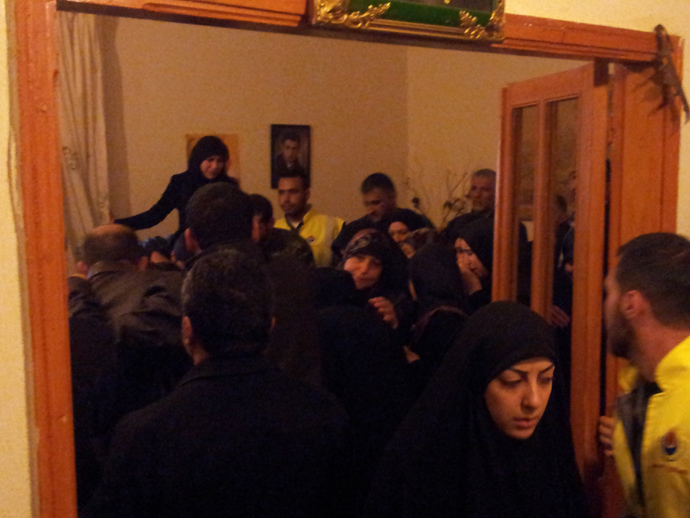
The Hezbollah flag and the cover are removed from the body of a young man, wrapped in a white shroud, with a slight smile on his lips, a smile of a martyr all Muslims are familiar with. No sign of decomposition, although it’s rather warm and he died three days ago – the time it took to get his body taken to Nabatieh.
Dozens of people pay their last respects to him. Everyone wants to see the martyr’s face and keep it in memory. Children are taken up to let them see better the martyr’s face.
“Do you also want to keep his face in your memory?” the dead man’s aunt asks.
When a young lady, a mother with a child or an old lady wish so, the men step aside as if following a command, which seems incredible as the whole place is crammed.
The Shi’ites weep at funerals, both men and women – and not of the fear of death or sorrow the man has died so young. It is generally allowed to weep over those who passed away before you and whom you failed to protect from the bullet with your own body.
A different type of tension is felt at this funeral. As we were approaching the martyr’s home, the women would be asking one and the same question “How is that possible?” while the men kept silent.
“That” is the war of Syrian rebels against Shi’ites everybody knows about. Every family has relations in Shi’ite villages near the border. Many homes became shelters for refugees from Syrian villages – not only Shi’ites but also Sunnis. The news about the rebels in Syria proclaimed Shi’ites ‘non-Muslims’ and ‘enemies’ is an open secret. Humiliation, exiles, torture and beatings – all that came from Israeli occupiers – was understandable and common. Now it’s the turn of brothers-in-faith and this just does not make any sense. It’s one thing to have historical examples, theoretical discussions and even realities of Iraq where people may die in terrorist attacks during the Hajj – in mosques and streets.
Now though the sectarian hate has come to Lebanon, a country that had a civil war for a quarter of the century, although without any religious motives, only political.
All those who are attending the funeral are aware that the Syrian rebels have mined a Shi’a mosque where the granddaughter of Muhammad the Prophet is buried in Darayya near Damascus. The rebels have mined another mosque [Sayyidah Zaynab Mosque] near Damascus, where another granddaughter of the Prophet Muhammad, Zaynab, was buried.
Grief-stricken and hardened by hardships, the men and women at Haidar Ahmad’ funeral shed no tears over the ruined architectural and cultural treasures of their mosques. They know that an act of violence on a holy ground signifies a war. What they want to know is what they are to do now that their brothers in faith have made it clear the war has begun? Is it the time to retaliate?
I talked about this with dozens of people, before and after the funeral. They all have questions, and no answers.
The deceased is moved to the ground floor, while visitors make their way out of the house via a narrow staircase. People gather in the street, except children. Men solemnly carry the body, they prey, and shoot a salute again. The body is placed on a hearse, and the long procession starts making its way into town.
The procession grows, with many people joining in– men of all ages. Women traditionally don’t take part in the funerals. But this time they can be seen along the way, all dressed in black and silent, looking from the windows and balconies.
Self-organization as statement of power
The procession floods the streets of Nabatieh – this town hasn’t seen anything like it ever before. Thousands of people solemnly wait for the procession to reach the cemetery. Perfect order is maintained despite the fact that all traffic is completely stopped. The closer to the cemetery, the more noticeable is Hezbollah’s presence: both veterans and young soldiers have come, some in fatigues, some in training uniforms. Many join the procession from the mosques, and their growing presence reinforces order and gives it a focus. Not all of the town residents are involved in Hezbollah. Many parents are unaware of their sons having joined for years. But when they die, the funeral reveals the truth, as there are no secret funerals. A proper public funeral is a matter of honor for any family. Many record funerals on their phones, demonstrating considerable shooting skills capturing the scenes without disclosing the actual identity of the fighters.
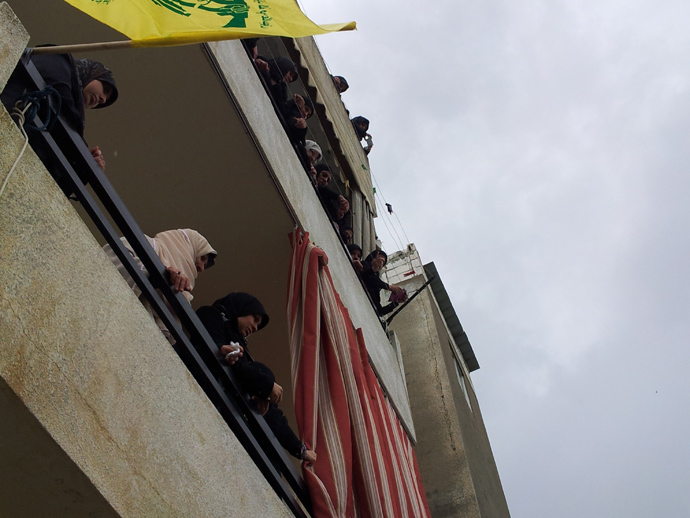
The martyr’s buried. The news spreads and people start leaving slowly. A funeral tells a lot about the local community. The most striking thing about it is a high level of self-organization, self-discipline and adherence to a code of behavior. Nothing is allowed to ruin the order. If anyone gets unwell, ambulances and medics are right there ready to provide medical aid, neighbors will give those in need a chair, some water, first aid – without agitation or excitement, efficiently and quickly.
"This is the ambulance service with the Resistance," people tell me when they see I am surprised at the sudden appearance of equipped vans and medics.
"We cannot bury our fallen heroes in secret. Everyone is given a funeral like this. Therefore when you hear mass media reports of 40 or 20 martyrs having been killed, you should know that this is a lie. A group of fighters like that will have no difficulty moving through the country and no one will be able to stop them," says one of the veterans. I heard the same from many in the Shia settlements on the border meaning that Hezbollah hasn’t engaged in the war and will not until ordered by its leader.
I ask them what photos are in the public domain that are usually referred to as the proof of Hezbollah being involved in action and suffering losses – the photos of dozens of coffins covered with the Resistance flags. They do some search on their phones and ask me to confirm, “Do you mean these photos?” I say yes.
“These are the photos of the remains of our soldiers captured by Israel a long time ago. They started retuning them to us many years after they took them in batches, that’s why we gave them collective funerals. In all other cases we give our fighters a family funeral,” – they explain to me.
“People have set up people's committees on both sides of the border, in Lebanon and Syria – that’s to protect themselves. These committees have nothing to do with Hezbollah. Hezbollah will engage only if Hasan Nasrallah orders it to. If they leave us no choice, we’ll accept the challenge, and if there is a political decision.” The thousands of people at the funeral of the martyr somehow made me feel like they mean what they say, and they are ready for this decision.
The statements, views and opinions expressed in this column are solely those of the author and do not necessarily represent those of RT.
The statements, views and opinions expressed in this column are solely those of the author and do not necessarily represent those of RT.
